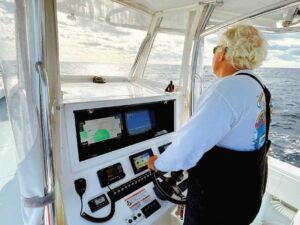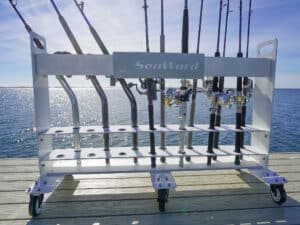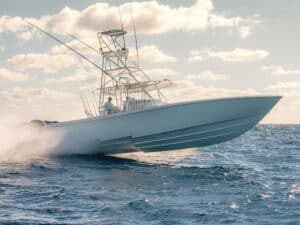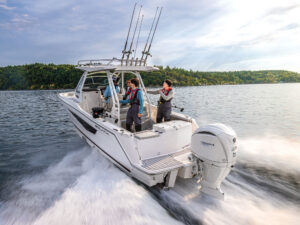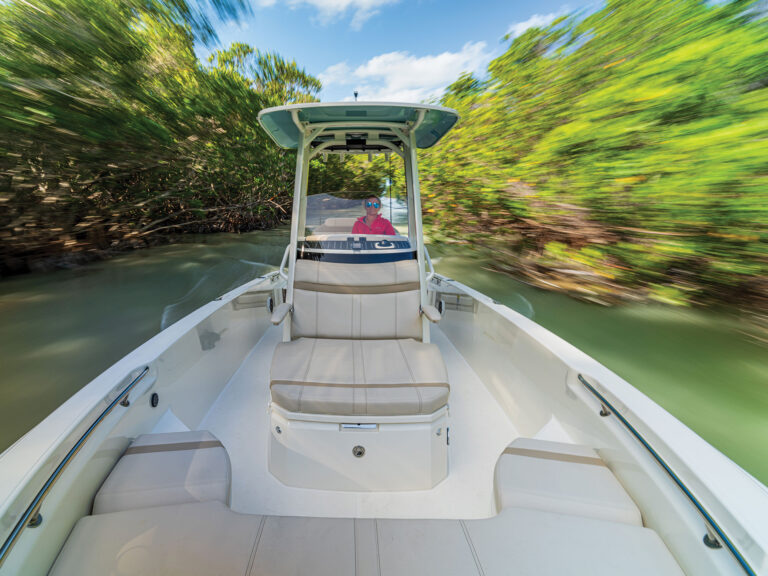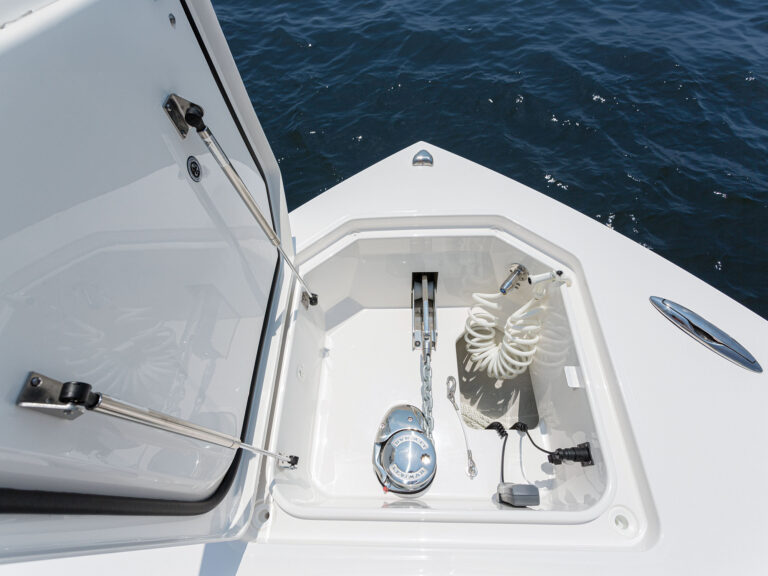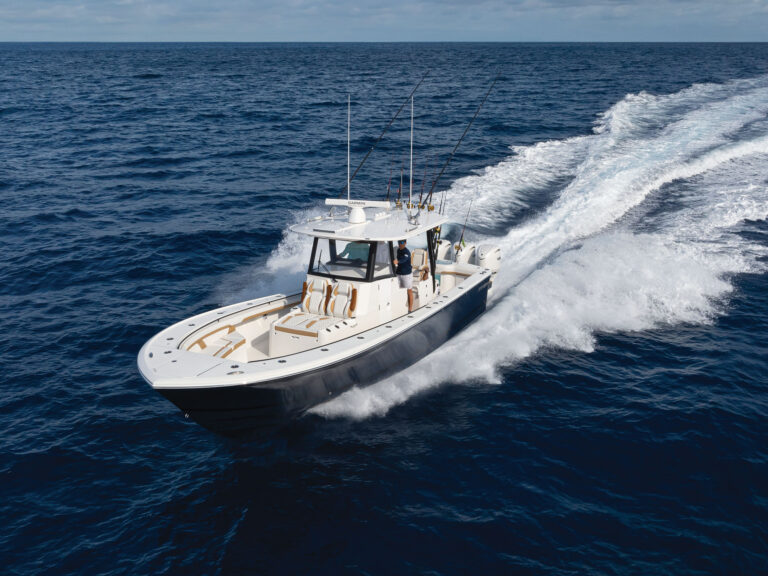
If you keep up with your outboard maintenance, the troubles you are most likely to experience on the water only call for minor repairs. Keep the engine manual on board for quick troubleshooting, and a handful of basic tools and spare parts to get the job done.
Fishing-trip checklists never include a computer loaded with engine diagnostic software like the ones service technicians use to troubleshoot a cantankerous outboard. Despite the digital circuitry, sophisticated sensors and system bundles in today’s motors, you don’t always have to call a towing company when your engine gives you trouble. There are some procedures simple enough for anyone to perform to get back up and running.
“It’s tough for a boat owner to troubleshoot problems on today’s fuel-injected four-strokes,” says Kenny Myers, a master technician at Paradise Marine, a factory-authorized service center for Yamaha, Suzuki and Honda outboards in Gulf Shores, Alabama. “For electrical issues, there’s not much to do other than change out the spark plugs, but most problems are probably related to fuel.”
Myers says engine alarms will sound or illuminate and shut down the engine before water in the fuel passes into the system. He recommends carrying a spare fuel-water-separator filter on board, along with quart-size Ziploc baggies. Most outboard manufacturers recommend 10-micron filters for the best protection. If the filter has a clear bowl and drain, the water can be siphoned into the baggie and stored to be properly disposed of later. The filters may have to be cleared of water a couple of times to purge the system. Most fuel-injected engines will reprime automatically before restarting, Myers says.
Perform a visual inspection on fuel-water filters, and run a hand over the base housing and the filter canister to check for rust or corrosion. “The bilge is moist, and salt spray causes rust. I see it all the time, and it can be a major fire hazard,” Myers says. He recommends changing filters every 50 hours of running time as a precaution, and at 100 hours regardless.
Myers also recommends carrying a set of spark plugs; spares for any other engine fuel filters; a ¼- or ⅜-inch socket set with an extension; a convertible screwdriver with straight, Phillips and Torx heads; side cutters; and Vice Grip pliers.
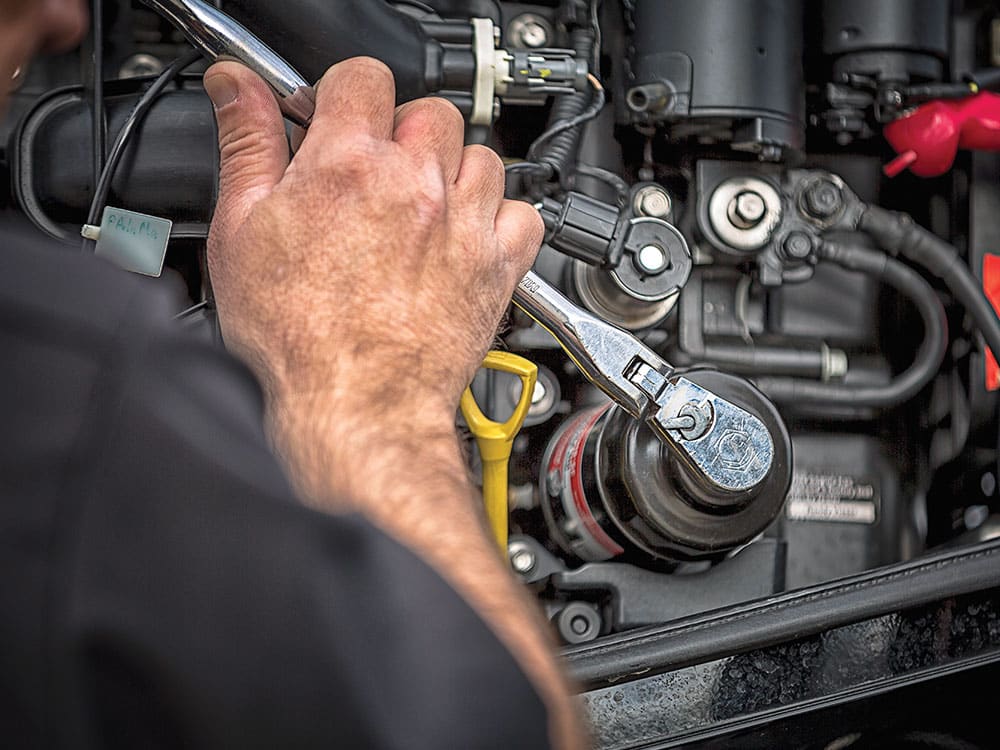
“You’d be surprised what you can hold with a pair of Vice Grips,” Myers adds. Some Yamaha filters require a special wrench, which can be purchased from a dealer. Myers says they are not expensive and serve for routine maintenance and emergency repairs. The coil packs may need to be removed to change some spark plugs. They’re secured by metric screws, so check to see if special fittings are required for those.
A stiff wire brush to clear corrosion off battery terminals and cables, a few spare battery connectors and fuses, zip ties for hoses and electrical bundles, electrical and duct tape, and anti-corrosion spray to free corroded bolts should also be part of the boat’s standard gear. A couple of quarts of engine oil come in handy if you need to add some out on the water. A spare propeller or a replacement-hub kit, plus the appropriate thrust washers, extra cotter pins and lock washers save the day if a prop is spun. And don’t forget to include a prop wrench and a tube of waterproof grease.
“It’s hard for the do-it-yourselfer to do much beyond basic fluid and simple part changes on digital four-strokes,” adds Jay Wissman, a service advisor for the Marine Max dealership in Wrightsville Beach, North Carolina. “The designs are much more complicated than the carbureted two-strokes. Many of the parts, like on the Verados, are sealed or can only be checked with computer diagnostics.”
Air filters don’t fail that often, but Wissman agrees it’s prudent to carry spare fuel filters and spark plugs in case of problems. “Fuel and spark are the two major culprits. It’s always a good idea to check the connections on wiring and fuel lines before you start swapping out parts.”
Digital electronics and fuel injection have made boating and fishing less stressful. But an outboard that won’t crank or run properly still ruins the day. Prevent potential problems by servicing the engine regularly and avoiding ethanol fuel. Carry a tool kit and some key spare parts on board. And just in case, get a towing service contract to cover all the bases.
Must-Have Spares for Your Boat
Aside from extra outboard oil and a tube of waterproof grease, it’s smart to always carry these on board:
• Spare propeller with cotter pin, and thrust and lock washers
• Spark plugs (complete set)
• Fuel-water-separator and other spare fuel filters
• Battery connectors (various sizes) and fuses (various amps)
Essential Tools for Outboard Engine Repair
• Vice Grip pliers
• Socket set with extension handle
• Convertible screwdriver with various head types
• Side-cutter pliers
• Stiff wire brush
• Prop wrench
• Zip ties
• Electrical tape
• Duct tape
• Anti-corrosion spray
• Ziploc bags (quart-size)

